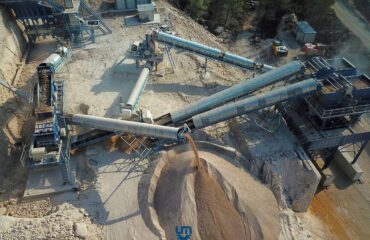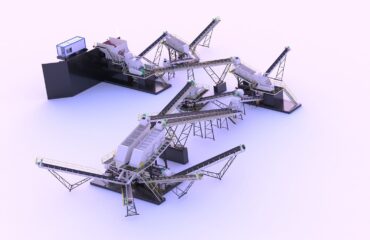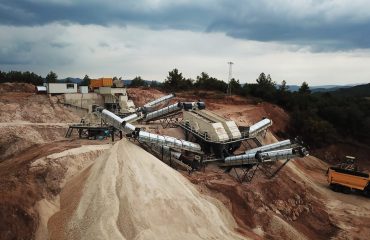UĞURMAK Impact Crusher
Materials containing parts weighing 100-5000 kg are ideal for impact crushers. The feed chute in these crushers is designed in such a way that the material fed enters the machine tangentially to the crusher pallets. This design method is used in CDK and SMK type impact crushers, which are among the products of Uğur Makina.
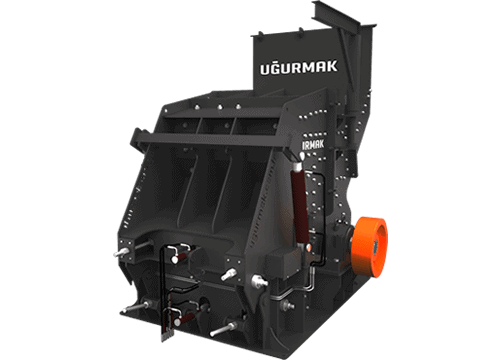
The purpose of this is to ensure that the material is rotated and sent to the fixed crushing jaws. The speed given to the part is several times less than the rotor annulus velocity. Thus, the high amount of force that will come to the rotor bearings is prevented. After the broken pieces pass between the rotor and the fixed jaw, they enter the narrower second and third crushing chambers. The layered material takes on a cubic form as a result.
The following are the most significant advantages of impact crushers:
- It provides high rate of size reduction.
- Dust produced during crushing is easily prevented by dust reduction solutions such as suction and water jet, thanks to its closed nature.
- Rotor balancing does not require high cost.
- The crushing force applied to the material is more directed towards the periphery of the part, which is beneficial for mineral enrichment. Thus, a quality separation occurs during crushing.
- A high amount of fine material and a small amount of medium material are obtained with very little powder ratio.
- The ventilated material, which is soft on the outside and hard on the inside, breaks particularly easily.
The following are disadvantages of impact crushers:
- Since the rotor rotates at such a high speed, the crusher works like a fan and this air flow causes excessive dust generation.
- Adjusting the proportion of small parts is difficult in some designs. This is because it is impossible in some designs to adjust the clearance between the rotating rotor and the crusher fixed jaws.
Uğur Makina designed an adjustment process to eliminate these disadvantages in its designs. In this way, the size reduction rate can be easily adjusted.
IMPACT CRUSHER MECHANISM
If the impact is successful, the relationship between kinetic energy and strain energy is as follows.

Equation – 1
M and v are the mass and velocity of the material particle. The structure and design of the pallet should be such that it can absorb this strain energy.
If we examine in terms of the material fed:

Equation – 2
Assuming the material is cubic and its size is “X”

Thus:
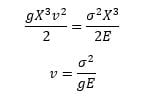
This speed value is 5 m/sec for limestone.
Approximately 10 times this speed value is used for the rotor.
According to JOISEL, the work done to break the part is equal to the product of the effort and the distance the part travels from the moment of impact to the moment of stopping. Effort is equal to the product of stress and area. Effort is equal to the product of stress and area. Thus, the work done:
![]()
According to this equation, R: Size Reduction ratio
This work will be equal to the kinetic energy delivered to the part.
Kinetic Energy is:
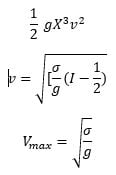
This value is found as 50m/sec for limestone, for example.
Hard materials require higher rotor speeds than soft materials. The size reduction ratio can reach up to 40: 1. Usually the numbers reached are 10: 1 and 20:1.
Click for Our Crusher Types and Technical Information






